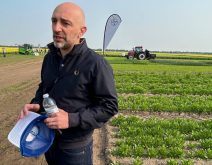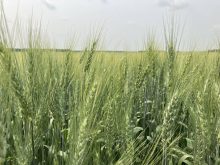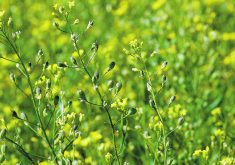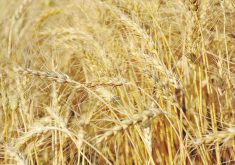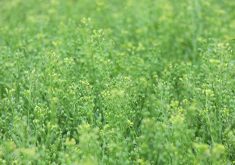The oilseed has been around for years, but advanced genetic tools have made it possible to make improvements quicker
Yield 10 Bioscience is seeking prairie farmers to join its quest to help fill the world’s growing demand for biofuels, bioplastics, healthy edible oils and climate change mitigation.
“Obviously it’s not going to be thousands of growers, but certainly it would be nice to have a hundred interested parties lined up,” said president Oliver Peoples.
“In fact, it would be ideally perfect to have a thousand keen farmers who are entrepreneurial and are interested in looking at new things to allow us to build a database so as we grow, we can build that out.”
Read Also
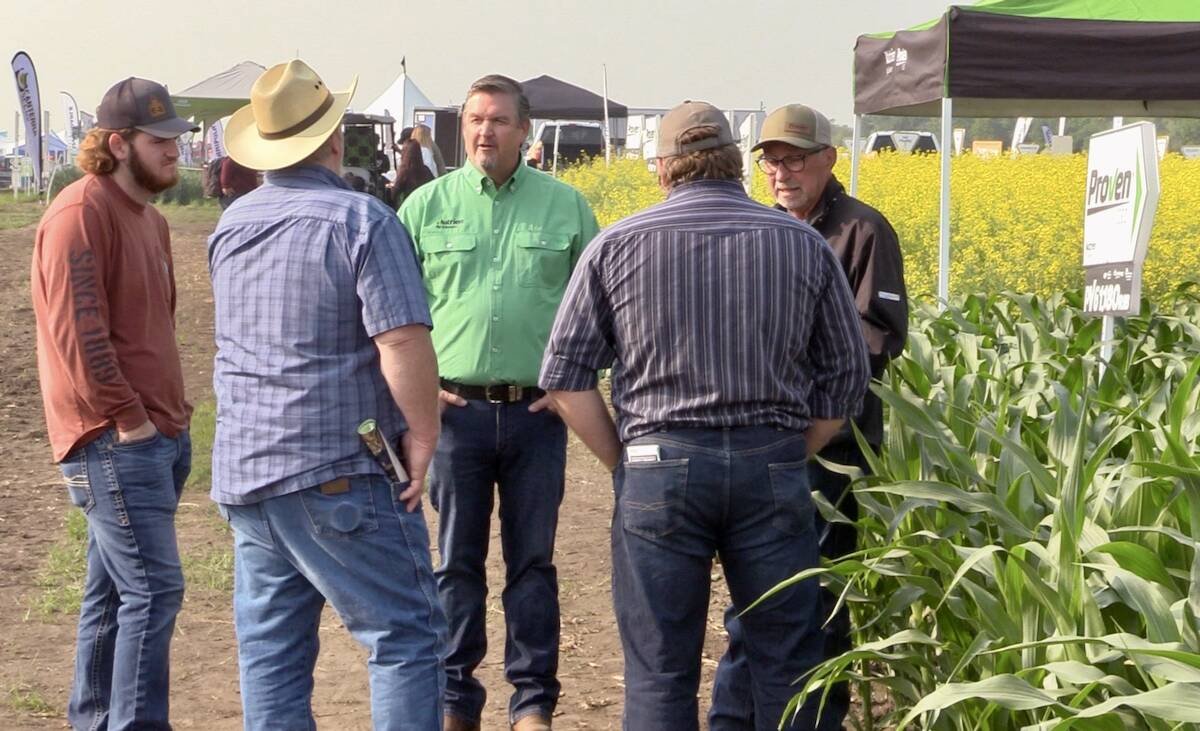
Interest in biological crop inputs continues to grow
It was only a few years ago that interest in alternative methods such as biologicals to boost a crop’s nutrient…
The company, based in Massachusetts and with branch operations in Saskatoon, uses genetic modification and gene editing to produce varieties of camelina aimed at producing feedstocks for biofuel plants around the world and provide high-quality protein meal for livestock.
Camelina has been touted as a biofuel crop for some time. Now there are advanced genetic tools that allow the crop to be improved more quickly, which are coupled with the growing urgency around climate change and energy options, said Peoples.
But while the potential may be huge, the first step begins with the business of farming.
“Of course, it really comes down to how profitable would it be for the farmer, because that’s sort of key, and number two, how convenient and how easy would it be to use,” Peoples said. “They have to be able to seamlessly integrate it into existing rotations.”
To this end Yield 10 offers net returns similar to canola for its camelina, with minimum return guarantees in its contracts. This should help allay the skepticism Peoples said accompanies growers’ interest in the crop. He foresees regular crop insurance eventually taking over this role as acres increase.
So far Yield 10 has reached 1,000 acres grown under contract and it is building up its operations in Alberta and Saskatchewan as part of a deliberate growth strategy.
“We’re going to build very cautiously in the early years, mainly to build grower trust and experience but also to give us time to bring the herbicide technologies online,” Peoples said.
Yield 10’s camelina trait targets may sound a lot like canola and indeed, he said the company’s developers have benefited immensely from knowledge about that crop. But camelina offers advantages over its cousin in the Brassica plant family.
For instance, it is more tolerant to drought and resistant to disease and can thrive where canola does not. Peoples said Yield 10 has Canadian research trials from Alberta’s northern Peace River country right down to Manitoba but the crop fits best in the brown soil zone right across the Prairies.
It shows particular promise in conditions such as those found in southern Alberta, acting as a cover crop — and cash crop — to control wind erosion and using residual fertilizer to reduce runoff into water systems.
“The meal is already approved, and there’s just enormous demand for the oil, in biofuels, is just exploding, to us,” Peoples said. “We’re offering a cover crop that offers economic value to the grower versus an economic cost.”
While he said Canadian government efforts to adapt winter canola to the harsh prairie climate have come to naught, camelina shows much more promise. The company’s winter varieties can survive temperatures of -10 C or lower. It appears to overwinter well too, performing well in field trials about three hours north of Saskatoon.
“It’s a winter oilseed and that’s pretty unusual — an oilseed that can survive Saskatchewan winter.”
This gives the crop a better chance to get established in the fall after planting in late August as weeds are going into dormancy and give the crop a jump on this competition in spring. It’s a good thing too, as there are few herbicide options approved for camelina in Canada.
Peoples said the company has an effective herbicide tolerance package for its spring varieties, and winter varieties are coming. This includes resistance to sulfonylurea, imidazolinone and other Group 2 product residues in the soil as well as a so-far-undisclosed foliar herbicide.
Like other fall-seeded crops, winter camelina offers a way to work around the weather while adding another harvest.
“We have a winter crop, something that flowers well before the heat hits in the summer, with the potential to get the crop off a month or so earlier before anything else,” Peoples said. “You can see how farmers can think about integrating that not only into their rotations but into their cash flow because they sit for a very long time exposed on the economics side.”
Yield 10 is looking to get about 20,000 acres of its spring and winter camelina varieties in the ground for the 2023 growing season, with the goal of a broad commercial rollout within the next two to three years.
A wild card is the Canadian Food Inspection Agency, which is updating guidelines to clarify how existing regulations apply to gene-edited crops. This effects one of the company’s high oil content varieties. Peoples said in the meantime, progress can proceed in the United States, where approvals are already in place.
Along with high oil content, Yield 10 is working on optimizing its camelina meal, which is higher in protein than canola and closer to soy. Varieties high in omega-3 fatty acids are being commercialized to benefit food and feed markets and help ease pressure on the world’s overstressed fish stocks.
Further on the horizon are varieties tailored to produce PHAs (polyhydroxyalkanoates), which are used as a biodegradable option to petroleum-based plastics. This would give camelina three revenue streams — oil, meal and PHA — combined with the carbon benefits of a cover crop.
“If the math is OK, and we think it is, we end up with an oil that has a negative carbon score. That’s the big prize; that’s what we all want,” Peoples said. “You’re not going to get that growing regular crops. But this product has that, which is truly disruptive.”



